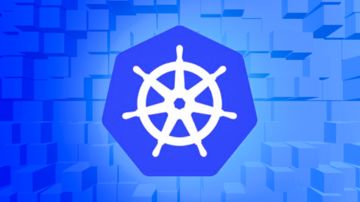本文详细介绍了Sentinel限流教程,包括Sentinel的基本概念、主要功能和应用场景。通过示例代码,展示了如何安装配置Sentinel以及设置流量控制、授权控制和系统保护规则。文章还提供了实战案例和常见问题解决方案,帮助读者更好地理解和使用Sentinel限流功能。
Sentinel介绍 什么是SentinelSentinel 是一个开源的、分布式的流量控制组件,由阿里巴巴开源并维护。它的设计目标是提供一个简单、轻量级、高性能的流量控制解决方案。Sentinel 可以用来实现系统保护、流控降级、服务容错等功能,确保系统在流量过大时能够可靠地运行。
Sentinel的主要功能Sentinel 具备多种核心功能:
- 流量控制:根据限流规则控制进入系统的流量。
- 授权控制:实现黑白名单控制,允许或拒绝特定请求。
- 系统保护:监控系统负载并根据设定的阈值自动降级。
- 异常检测:监控RPC调用情况,根据异常比例进行异常比率降级。
- 实时监控:提供实时的监控视图,帮助运维人员了解应用状态。
- 丰富的规则配置:支持多种限流规则,可以根据需求灵活配置。
Sentinel 在多种场景下都能发挥作用:
- 流量削峰填谷:在流量高峰时,通过限流控制,减少请求量,防止系统过载。
- 资源隔离:为不同的用户提供不同的资源隔离策略,提升用户体验。
- 服务容错:在服务链路中设置异常比率限流,保障整个系统稳定性。
- 分布式系统保护:在分布式系统中,Sentinel 可以实现全局流量控制,避免局部故障扩散。
限流是指在系统中设置流量阈值,当请求超过阈值时,系统会拒绝处理多余的请求。这样可以有效控制系统的负载,在高流量情况下保护系统不被击垮。
限流的重要性限流是保护系统稳定性的关键措施之一。在互联网应用中,流量的突然增加可能导致系统崩溃,通过限流可以避免这种风险。限流可以:
- 防止过载:当系统接收到大量请求时,通过限制请求数量来防止系统过载。
- 提高用户体验:通过合理分配资源,确保核心请求能够及时响应,提升用户满意度。
- 保护系统安全性:防止恶意攻击,例如 DDoS 攻击,通过限流可以降低这类攻击的影响。
常见的限流策略包括:
- 直接限流:当请求超过设定的阈值时,直接拒绝多余的请求。
- 延时限流:将超出阈值的请求放入队列,等待一段时间后再处理。
- 关联限流:基于相关资源的状态进行限流,如关联数据库、缓存等。
在开始使用 Sentinel 之前,需要确保已经安装了 Java 开发环境,并且 JDK 版本在 1.8 以上。接下来还需要安装 Maven 作为构建工具。
Maven依赖配置在项目的 pom.xml 文件中添加 Sentinel 的 Maven 依赖:
<dependency>
<groupId>com.alibaba.csp</groupId>
<artifactId>sentinel-core</artifactId>
<version>1.8.4</version>
</dependency>
<dependency>
<groupId>com.alibaba.csp</groupId>
<artifactId>sentinel-transport-simple-http</artifactId>
<version>1.8.4</version>
</dependency>
<dependency>
<groupId>com.alibaba.csp</groupId>
<artifactId>sentinel-datasource-consul</artifactId>
<version>1.8.4</version>
</dependency>
<dependency>
<groupId>com.alibaba.csp</groupId>
<artifactId>sentinel-slf4j-log</artifactId>
<version>1.8.4</version>
</dependency>
<dependency>
<groupId>com.alibaba.csp</groupId>
<artifactId>sentinel-transport-simple-netty</artifactId>
<version>1.8.4</version>
</dependency>为了快速上手,可以创建一个简单的 Java 类来测试 Sentinel 的基本功能。下面是一个简单的示例代码:
import com.alibaba.csp.sentinel.Entry;
import com.alibaba.csp.sentinel.SphU;
import com.alibaba.csp.sentinel.slots.block.BlockException;
import com.alibaba.csp.sentinel.slots.block.RuleEnum;
import com.alibaba.csp.sentinel.slots.block.flow.FlowRule;
import com.alibaba.csp.sentinel.slots.block.flow.FlowRuleManager;
import java.util.ArrayList;
import java.util.List;
public class SentinelQuickStart {
public static void main(String[] args) {
// 初始化限流规则
initFlowRules();
// 业务逻辑
while (true) {
try (Entry entry = SphU.entry("HelloWorld")) {
System.out.println("Processing request...");
Thread.sleep(1000);
} catch (BlockException e) {
System.out.println("Blocked by Sentinel!");
}
}
}
private static void initFlowRules() {
List<FlowRule> rules = new ArrayList<>();
FlowRule rule = new FlowRule();
rule.setResource("HelloWorld");
rule.setGrade(RuleEnum.QPS);
rule.setCount(1);
rule.setControlBehavior(RuleEnum.CONTROL_BEHAVIOR_DEFAULT);
rules.add(rule);
FlowRuleManager.loadRules(rules);
}
}该示例代码中定义了一个资源 "HelloWorld",并设置每秒只允许一个请求通过。当请求超过限流阈值时,Sentinel 会拒绝多余的请求。
实战:Sentinel限流规则配置 流量控制规则流量控制规则用于控制进入系统的请求流量。通过这些规则,可以实现对特定资源或接口的流量限制。
以下是一个简单的流量控制规则配置示例:
- 创建资源名称:每个限流规则都需要指定一个资源名称,资源可以是接口、服务等。
- 设置流量阈值:根据业务需求,设定每秒允许通过的最大请求数。
- 选择限流模式:根据实际需求选择合适的限流模式。
示例代码:
import com.alibaba.csp.sentinel.slots.block.RuleEnum;
import com.alibaba.csp.sentinel.slots.block.flow.FlowRule;
import com.alibaba.csp.sentinel.slots.block.flow.FlowRuleManager;
public class FlowRuleExample {
public static void initFlowRules() {
List<FlowRule> rules = new ArrayList<>();
FlowRule rule = new FlowRule();
rule.setResource("api1");
rule.setGrade(RuleEnum.QPS);
rule.setCount(10);
rule.setControlBehavior(RuleEnum.CONTROL_BEHAVIOR_DEFAULT);
rules.add(rule);
FlowRule rule2 = new FlowRule();
rule2.setResource("api2");
rule2.setGrade(RuleEnum.CPS);
rule2.setCount(20);
rule2.setControlBehavior(RuleEnum.CONTROL_BEHAVIOR_DEFAULT);
rules.add(rule2);
FlowRuleManager.loadRules(rules);
}
}在上面的代码中,定义了两个资源 "api1" 和 "api2",分别为它们设置了 QPS 和 CPS 限流模式,并设置了相应的阈值。
授权规则授权规则用于控制特定资源的访问权限。通过设置黑白名单,可以实现对于特定请求的过滤。
示例代码:
import com.alibaba.csp.sentinel.slots.block.RuleEnum;
import com.alibaba.csp.sentinel.slots.block.flow.AuthorityRule;
import com.alibaba.csp.sentinel.slots.block.flow.AuthorityRuleManager;
public class AuthorityRuleExample {
public static void initAuthorityRules() {
List<AuthorityRule> rules = new ArrayList<>();
AuthorityRule rule = new AuthorityRule();
rule.setResource("api1");
rule.setStrategy(RuleEnum.WHITE);
rule.setStrategy(RuleEnum.WHITE);
rule.setWhiteList(new String[]{"user1", "user2"});
rules.add(rule);
AuthorityRule rule2 = new AuthorityRule();
rule2.setResource("api2");
rule2.setStrategy(RuleEnum.BLACK);
rule2.setBlackList(new String[]{"user3", "user4"});
rules.add(rule2);
AuthorityRuleManager.loadRules(rules);
}
}在上面的代码中,定义了两个资源 "api1" 和 "api2",分别为它们设置了白名单和黑名单规则,只允许或拒绝特定的用户访问。
系统保护规则系统保护规则用于监控系统负载,当系统负载过高时,自动降级保护系统。可以监控 CPU 使用率、内存使用量等系统指标。
示例代码:
import com.alibaba.csp.sentinel.slots.system.SystemRule;
import com.alibaba.csp.sentinel.slots.system.SystemRuleManager;
public class SystemRuleExample {
public static void initSystemRules() {
List<SystemRule> rules = new ArrayList<>();
SystemRule rule = new SystemRule();
rule.setResource("system");
rule.setGrade(RuleEnum.SYSTEM);
rule.setCount(0.8);
rule.setStatIntervalMs(1000);
rules.add(rule);
SystemRuleManager.loadRules(rules);
}
}在上面的代码中,定义了一个资源 "system",设置了系统保护规则,监控 CPU 使用率,并设置阈值为 80%。当 CPU 使用率超过 80% 时,系统会自动降级,限制流量。
Sentinel限流策略详解 直接限流直接限流是最基本的限流策略,当请求超过设定的阈值时,直接拒绝多余的请求。这种策略简单直接,可以有效防止资源被过度占用。
示例代码:
import com.alibaba.csp.sentinel.Entry;
import com.alibaba.csp.sentinel.SphU;
import com.alibaba.csp.sentinel.slots.block.BlockException;
public class DirectFlowControlExample {
public static void main(String[] args) {
while (true) {
try (Entry entry = SphU.entry("directFlow")) {
System.out.println("Processing request...");
Thread.sleep(1000);
} catch (BlockException e) {
System.out.println("Blocked by Sentinel!");
}
}
}
}延时限流是一种更温和的限流策略,当请求超过设定的阈值时,将多余的请求放入队列,等待一段时间后再处理。这种策略可以缓解突发流量,避免系统过载。
示例代码:
import com.alibaba.csp.sentinel.Entry;
import com.alibaba.csp.sentinel.SphU;
import com.alibaba.csp.sentinel.slots.block.BlockException;
public class DelayedFlowControlExample {
public static void main(String[] args) {
while (true) {
try (Entry entry = SphU.entry("delayedFlow")) {
System.out.println("Processing request...");
Thread.sleep(1000);
} catch (BlockException e) {
System.out.println("Blocked by Sentinel!");
Thread.sleep(1000);
}
}
}
}关联限流是一种复杂的限流策略,基于相关资源的状态进行限流。例如,可以基于数据库负载、缓存使用情况等进行限流。这种策略可以更好地保护系统的整体稳定性。
示例代码:
import com.alibaba.csp.sentinel.Entry;
import com.alibaba.csp.sentinel.SphU;
import com.alibaba.csp.sentinel.slots.block.BlockException;
import com.alibaba.csp.sentinel.slots.block.RuleEnum;
import com.alibaba.csp.sentinel.slots.block.flow.FlowRule;
import com.alibaba.csp.sentinel.slots.block.flow.FlowRuleManager;
import com.alibaba.csp.sentinel.slots.system.SystemRule;
import com.alibaba.csp.sentinel.slots.system.SystemRuleManager;
public class AssociatedFlowControlExample {
public static void main(String[] args) {
// 初始化流量规则和系统保护规则
initFlowRules();
initSystemRules();
while (true) {
try (Entry entry = SphU.entry("associatedFlow")) {
System.out.println("Processing request...");
Thread.sleep(1000);
} catch (BlockException e) {
System.out.println("Blocked by Sentinel!");
Thread.sleep(1000);
}
}
}
private static void initFlowRules() {
List<FlowRule> rules = new ArrayList<>();
FlowRule rule = new FlowRule();
rule.setResource("associatedFlow");
rule.setGrade(RuleEnum.QPS);
rule.setCount(10);
rule.setControlBehavior(RuleEnum.CONTROL_BEHAVIOR_DEFAULT);
rules.add(rule);
FlowRuleManager.loadRules(rules);
}
private static void initSystemRules() {
List<SystemRule> rules = new ArrayList<>();
SystemRule rule = new SystemRule();
rule.setResource("system");
rule.setGrade(RuleEnum.SYSTEM);
rule.setCount(0.8);
rule.setStatIntervalMs(1000);
rules.add(rule);
SystemRuleManager.loadRules(rules);
}
}在实际项目中,Sentinel 可以用于多种场景,例如电商系统在双 11 期间流量控制,微服务架构下的服务容错,以及分布式系统中的全局流量控制。以下是一个电商系统中的应用案例:
案例描述
在电商系统的交易模块中,通过 Sentinel 对订单接口进行限流,防止流量峰值时系统过载。
示例代码:
import com.alibaba.csp.sentinel.Entry;
import com.alibaba.csp.sentinel.SphU;
import com.alibaba.csp.sentinel.slots.block.BlockException;
public class OrderService {
public void createOrder(String orderId) {
try (Entry entry = SphU.entry("order")) {
// 处理订单逻辑
System.out.println("Processing order for " + orderId);
Thread.sleep(1000);
} catch (BlockException e) {
System.out.println("Order processing blocked by Sentinel!");
}
}
}在使用 Sentinel 进行限流时,可能会遇到一些常见问题,以下是一些解决方案:
问题1:限流策略配置不当导致服务不可用
解决方案:
- 调整限流阈值,确保阈值设置合理。
- 通过监控视图实时查看系统状态,及时调整策略。
问题2:系统负载过高导致Sentinel无法正常工作
解决方案:
- 配置系统保护规则,监控 CPU、内存等系统指标。
- 设置合理的阈值,当系统负载过高时自动降级。
问题3:限流规则配置复杂不易维护
解决方案:
- 使用配置中心动态管理限流规则。
- 将规则配置简化,减少复杂度。
示例1:调整限流阈值
import com.alibaba.csp.sentinel.Entry;
import com.alibaba.csp.sentinel.SphU;
import com.alibaba.csp.sentinel.slots.block.BlockException;
import com.alibaba.csp.sentinel.slots.block.RuleEnum;
import com.alibaba.csp.sentinel.slots.block.flow.FlowRule;
import com.alibaba.csp.sentinel.slots.block.flow.FlowRuleManager;
public class AdjustFlowThresholdExample {
public static void main(String[] args) {
List<FlowRule> rules = new ArrayList<>();
FlowRule rule = new FlowRule();
rule.setResource("api1");
rule.setGrade(RuleEnum.QPS);
rule.setCount(15); // 调整阈值
rule.setControlBehavior(RuleEnum.CONTROL_BEHAVIOR_DEFAULT);
rules.add(rule);
FlowRuleManager.loadRules(rules);
while (true) {
try (Entry entry = SphU.entry("api1")) {
System.out.println("Processing request...");
Thread.sleep(1000);
} catch (BlockException e) {
System.out.println("Blocked by Sentinel!");
Thread.sleep(1000);
}
}
}
}示例2:监控系统状态
import com.alibaba.csp.sentinel.Entry;
import com.alibaba.csp.sentinel.SphU;
import com.alibaba.csp.sentinel.slots.block.BlockException;
import com.alibaba.csp.sentinel.slots.block.RuleEnum;
import com.alibaba.csp.sentinel.slots.block.flow.FlowRule;
import com.alibaba.csp.sentinel.slots.block.flow.FlowRuleManager;
import com.alibaba.csp.sentinel.slots.system.SystemRule;
import com.alibaba.csp.sentinel.slots.system.SystemRuleManager;
public class MonitorSystemStateExample {
public static void main(String[] args) {
List<SystemRule> rules = new ArrayList<>();
SystemRule rule = new SystemRule();
rule.setResource("system");
rule.setGrade(RuleEnum.SYSTEM);
rule.setCount(0.8);
rule.setStatIntervalMs(1000);
rules.add(rule);
SystemRuleManager.loadRules(rules);
while (true) {
try (Entry entry = SphU.entry("api1")) {
System.out.println("Processing request...");
Thread.sleep(1000);
} catch (BlockException e) {
System.out.println("Blocked by Sentinel!");
Thread.sleep(1000);
}
}
}
}为了更好地使用 Sentinel,可以进一步学习以下内容:
- 深入理解Sentinel的实现原理:包括限流算法、系统保护机制等。
- 实践更多应用场景:尝试在不同类型的项目中使用 Sentinel。
- 参与开源社区:通过参与社区交流,学习更多高级用法和最佳实践。
推荐编程学习网站:慕课网 提供了大量的编程教程和实战项目,可以帮助你更好地掌握 Sentinel 和其他技术。

 随时随地看视频
随时随地看视频



